Artist: William Conor RHA RUA ROI (1881-1968) Title: Malahide, Co. Dublin Signature: signed lower right Medium: wax crayon Size: 33 x 43.30cm (13 x 17in) Framed Size: 52 x 62cm (20.5 x 24.4in) Provenance: Private Collection a#morebtn { color: #de1d01; } a#morebtn:hover { cursor: pointer;} Dating from around 1930, this crayon drawing by William Conor depicts Malahide as seen from across the estuary. Although still designated a village, Malahide has grown steadily over the years and is now a bustling town. However, Conor's sketch shows Malahide as it was almost a century ago. Dominatin... Read more William Conor Lot 22 - 'Malahide, Co. Dublin' Estimate: €3,000 - €5,000 Dating from around 1930, this crayon drawing by William Conor depicts Malahide as seen from across the estuary. Although still designated a village, Malahide has grown steadily over the years and is now a bustling town. However, Conor's sketch shows Malahide as it was almost a century ago. Dominating the skyline is St. Sylvester's Church, at the top of Old Street. In the foreground, a sailing boat is drawn up on the estuary sands. The waterfront has coal yards and gas works, all of which are now gone, and replaced by new housing and shops. While most of Conor's drawings show people at work and play, this drawing captures the atmosphere and appearance of Malahide as seen from a distance, when it was still a quiet village on the north Dublin coast. Born in Belfast in 1881 and trained at what is now the Belfast College of Art, William Conor worked initially as a commercial artist before receiving, during WWI, a commission, to paint portraits of those involved in the war effort. By 1920, he had moved to London, where his work was promoted by fellow-Belfast artist John Lavery In 1922, he was recommended for another commission, to record the opening of Parliament in Northern Ireland. Over the following decades, Conor painted many portraits of judges, politicians, aristocrats, and army officers. However, today he is best known for his depictions of ordinary working people in Belfast and its surroundings; the shipbuilders, labourers, street musicians and washerwomen who struggled to maintain a livelihood, often in conditions of adversity. He drew shoppers, itinerant workers and children playing in the street, images which are nowadays considered perhaps more important than his prestige commissioned work. Peter Murray, November 2021
Artist: William Conor RHA RUA ROI (1881-1968) Title: Malahide, Co. Dublin Signature: signed lower right Medium: wax crayon Size: 33 x 43.30cm (13 x 17in) Framed Size: 52 x 62cm (20.5 x 24.4in) Provenance: Private Collection a#morebtn { color: #de1d01; } a#morebtn:hover { cursor: pointer;} Dating from around 1930, this crayon drawing by William Conor depicts Malahide as seen from across the estuary. Although still designated a village, Malahide has grown steadily over the years and is now a bustling town. However, Conor's sketch shows Malahide as it was almost a century ago. Dominatin... Read more William Conor Lot 22 - 'Malahide, Co. Dublin' Estimate: €3,000 - €5,000 Dating from around 1930, this crayon drawing by William Conor depicts Malahide as seen from across the estuary. Although still designated a village, Malahide has grown steadily over the years and is now a bustling town. However, Conor's sketch shows Malahide as it was almost a century ago. Dominating the skyline is St. Sylvester's Church, at the top of Old Street. In the foreground, a sailing boat is drawn up on the estuary sands. The waterfront has coal yards and gas works, all of which are now gone, and replaced by new housing and shops. While most of Conor's drawings show people at work and play, this drawing captures the atmosphere and appearance of Malahide as seen from a distance, when it was still a quiet village on the north Dublin coast. Born in Belfast in 1881 and trained at what is now the Belfast College of Art, William Conor worked initially as a commercial artist before receiving, during WWI, a commission, to paint portraits of those involved in the war effort. By 1920, he had moved to London, where his work was promoted by fellow-Belfast artist John Lavery In 1922, he was recommended for another commission, to record the opening of Parliament in Northern Ireland. Over the following decades, Conor painted many portraits of judges, politicians, aristocrats, and army officers. However, today he is best known for his depictions of ordinary working people in Belfast and its surroundings; the shipbuilders, labourers, street musicians and washerwomen who struggled to maintain a livelihood, often in conditions of adversity. He drew shoppers, itinerant workers and children playing in the street, images which are nowadays considered perhaps more important than his prestige commissioned work. Peter Murray, November 2021
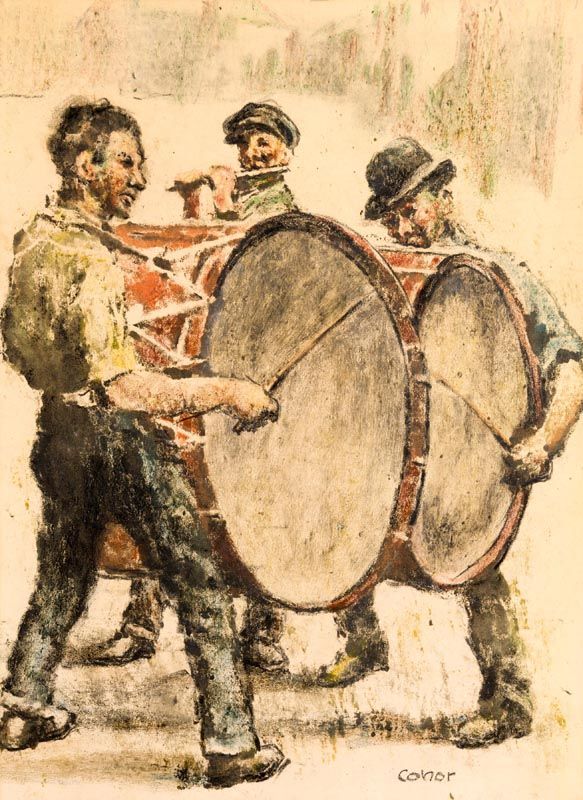
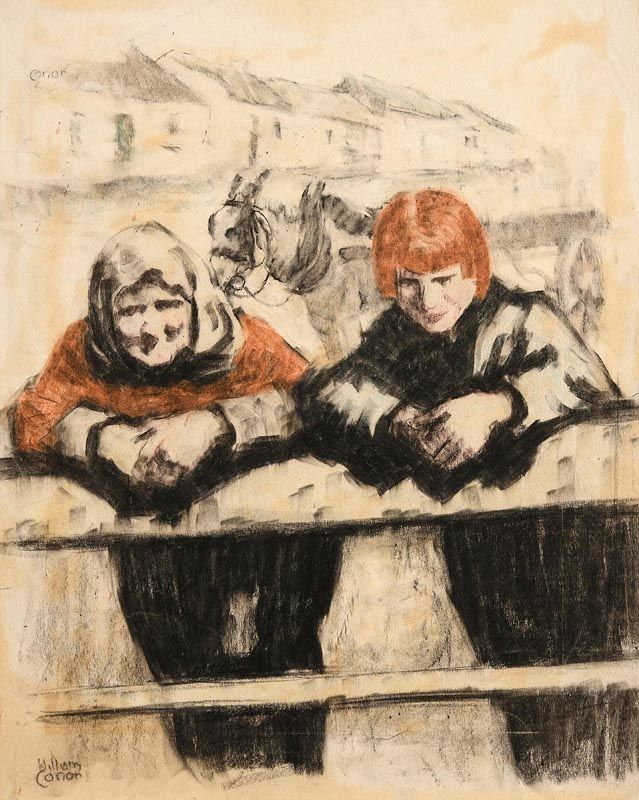
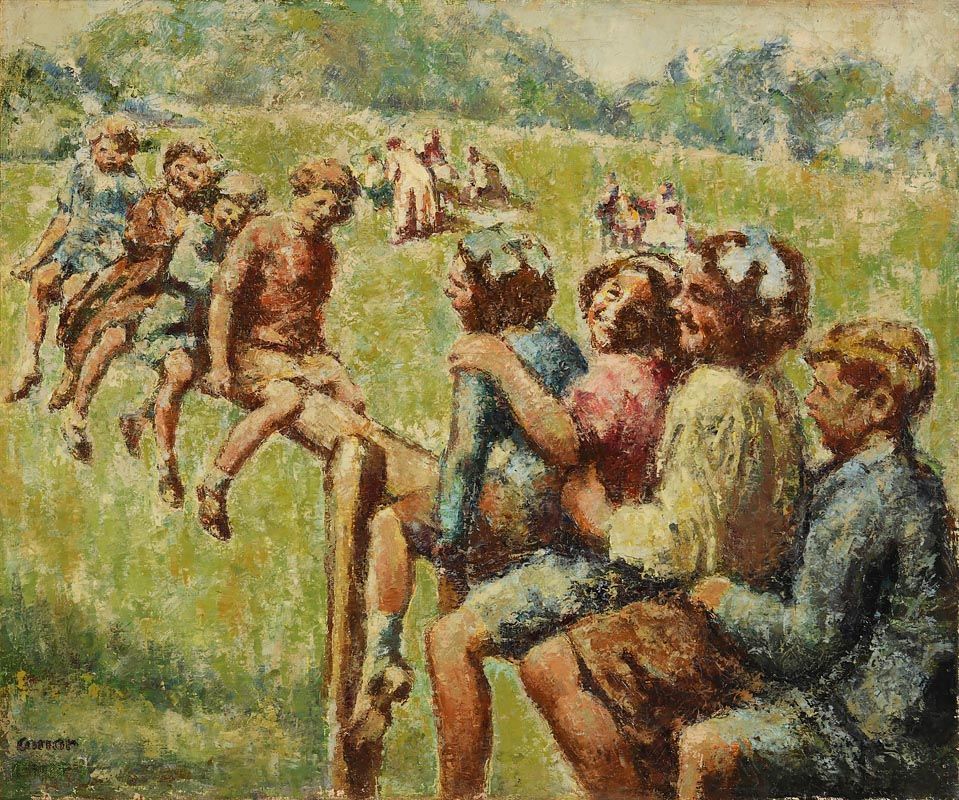
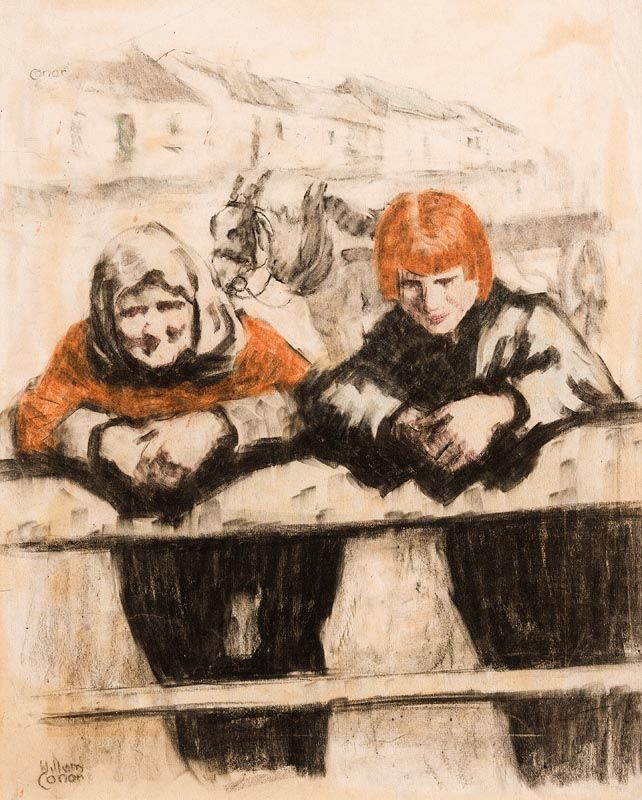
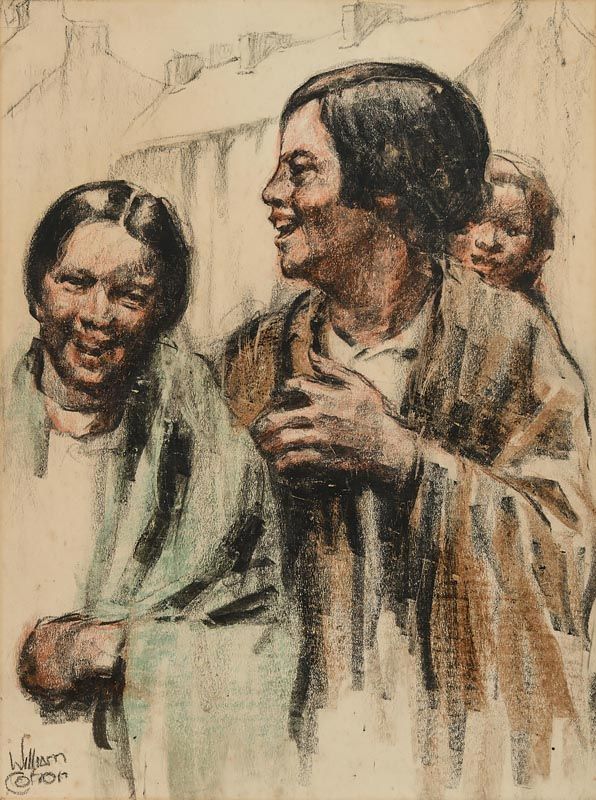
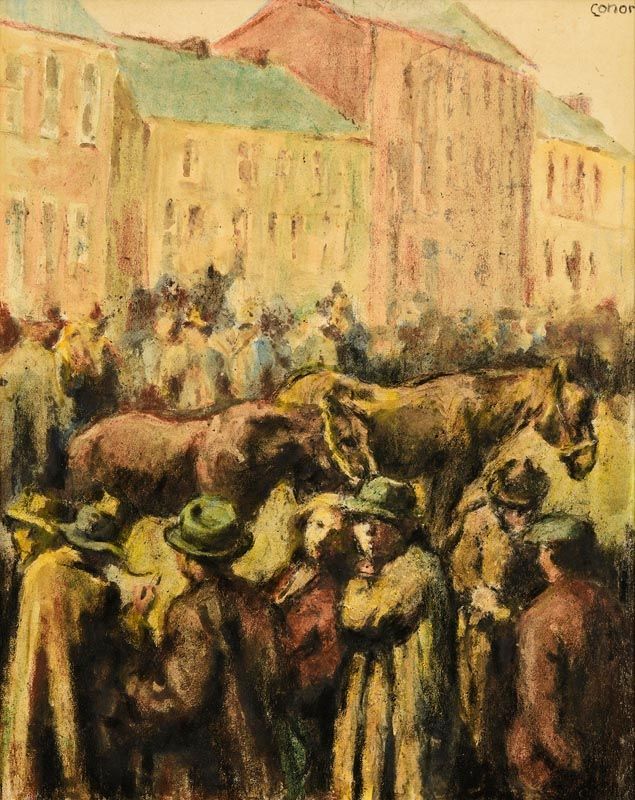
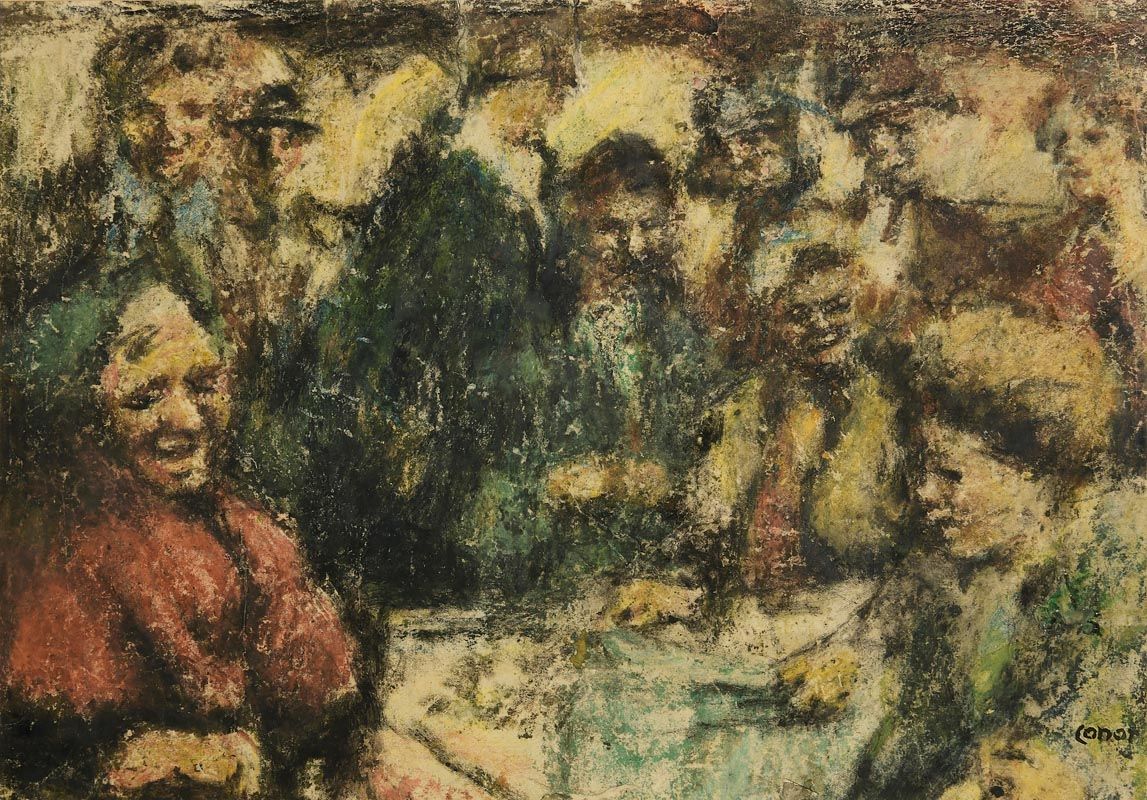

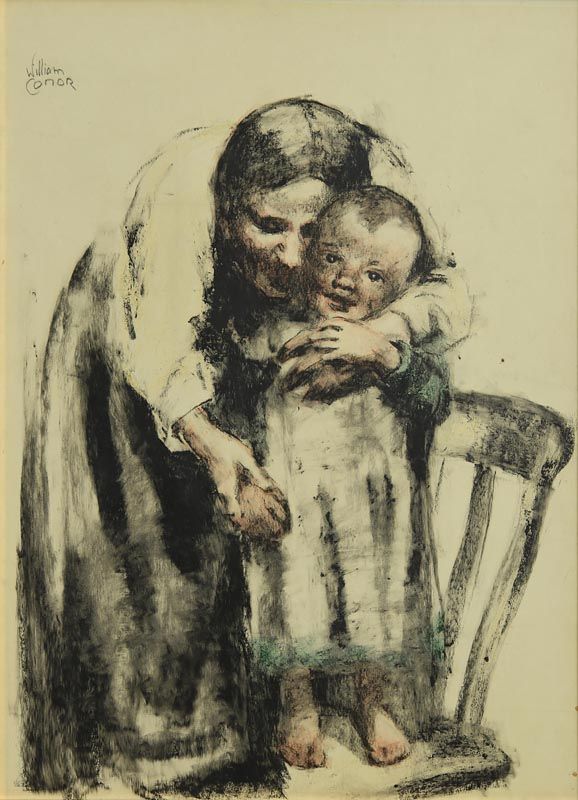
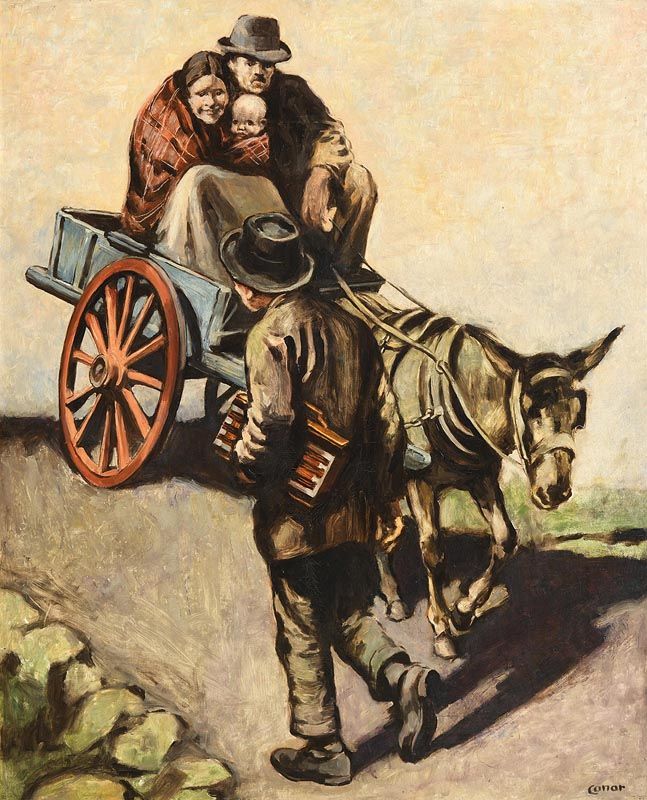
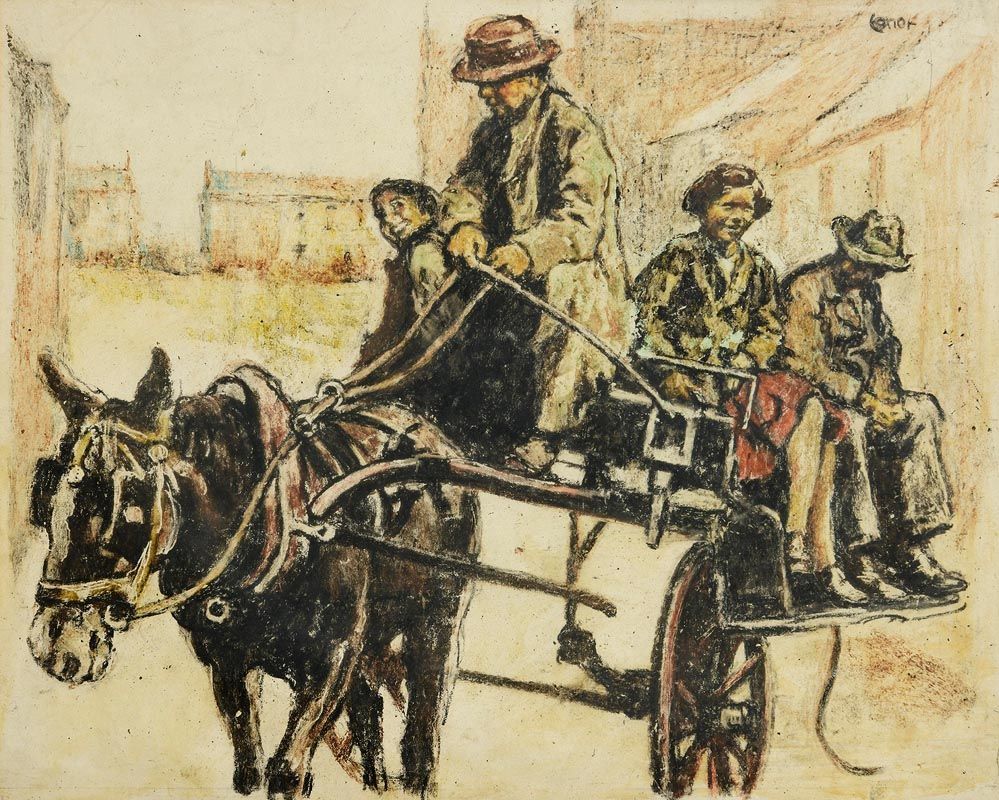
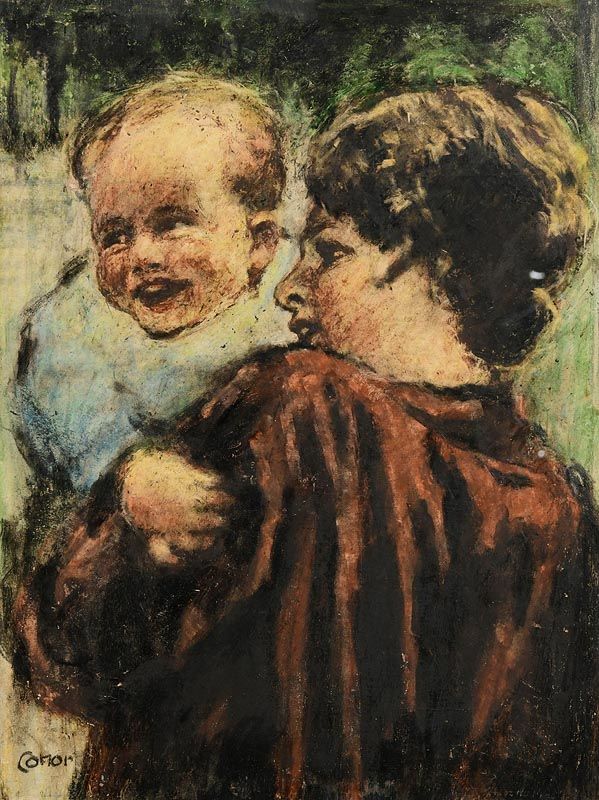

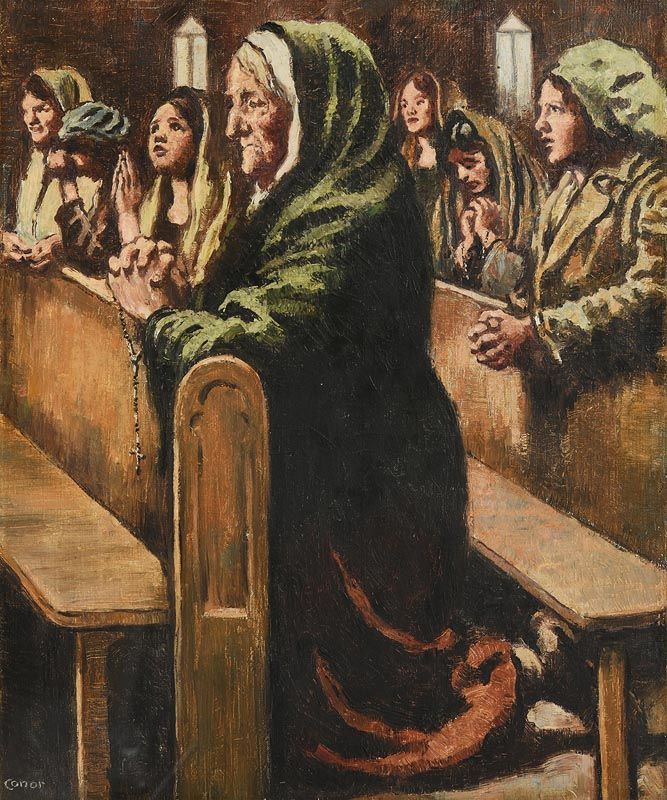
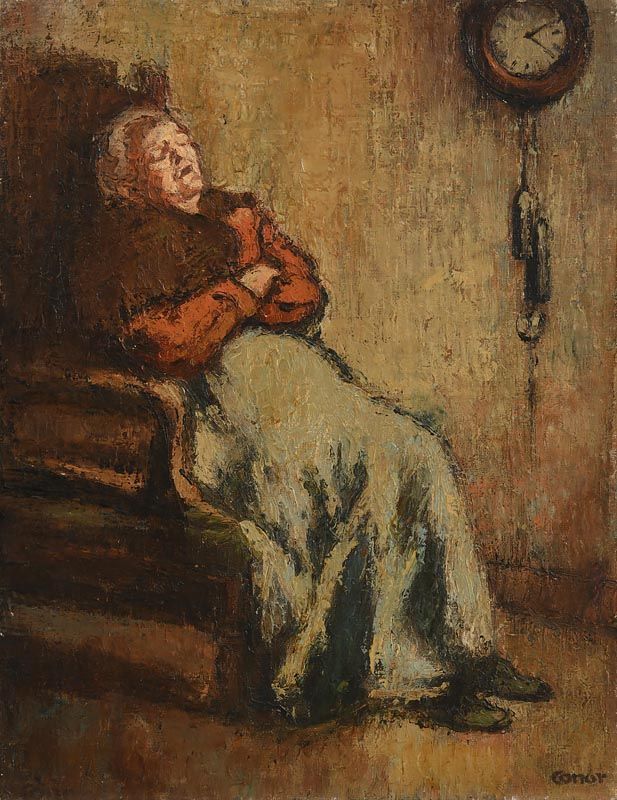
Try LotSearch and its premium features for 7 days - without any costs!
Be notified automatically about new items in upcoming auctions.
Create an alert